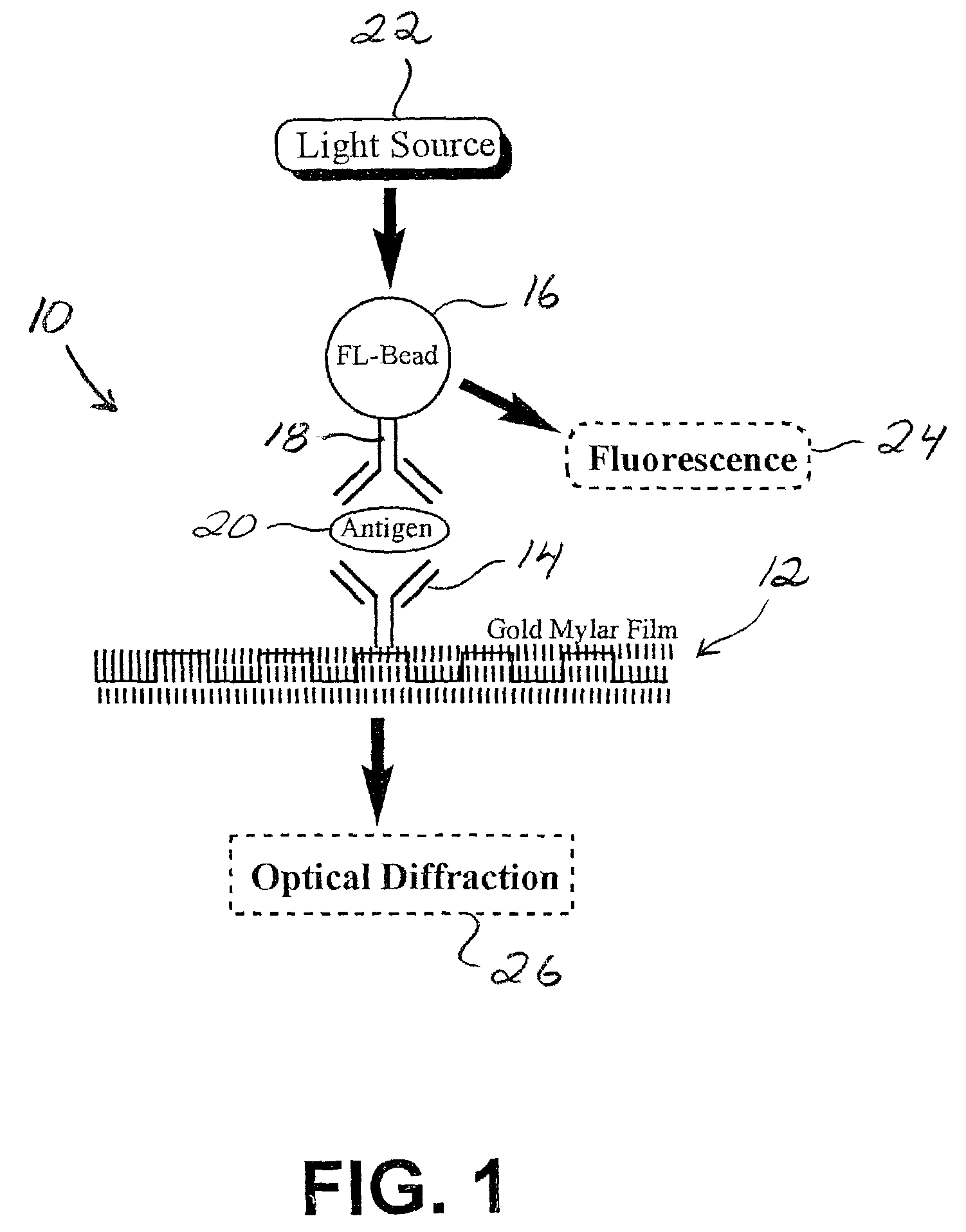Enhanced diffraction-based biosensor devices
a biosensor and diffraction technology, applied in the field of analyte detection in a medium, can solve the problems of complex visualization device, high cost of prior systems and devices, and inability to view the diffraction pattern with a trained technician
- Summary
- Abstract
- Description
- Claims
- Application Information
AI Technical Summary
Benefits of technology
Problems solved by technology
Method used
Image
Examples
examples
[0056]An example of derivation of an antibody to C-reactive protein (CRP) or Luteinizing hormone (LH) follows: To 1 mg of antibody was added 450 μ1 phosphate buffered saline (PBS) and 50 μl of 10 mM aqueous solution of sulfo-LC-SPDP (Pierce Catalog# 21650). After 60 minutes at room temperature, the solution is desalted in a D-Salt™ polyacrylamide desalting column (Pierce Catalog # 43240ZZ). An acetate buffer, pH4.5 is used if a subsequent reduction of the disulfide bond is to be done, while a PBS buffer, pH7.5, is used if the antibody derivative is to remain as the disulfide. 500 μl fractions were collected from the column, and the fractions with antibody derivative was determined using a Coomassie® plus protein Assay.
[0057]The resulting thiolated antibody, either disulfide or thiol, may be contact printed on gold-coated MYLAR®. For example, an elastomeric stamp with raised features in a desired pattern is soaked in a 0.5 mg / ml concentration of the thiolated antibody for 10 minutes,...
PUM
| Property | Measurement | Unit |
|---|---|---|
| Area | aaaaa | aaaaa |
| Fluorescence | aaaaa | aaaaa |
Abstract
Description
Claims
Application Information
 Login to View More
Login to View More - R&D
- Intellectual Property
- Life Sciences
- Materials
- Tech Scout
- Unparalleled Data Quality
- Higher Quality Content
- 60% Fewer Hallucinations
Browse by: Latest US Patents, China's latest patents, Technical Efficacy Thesaurus, Application Domain, Technology Topic, Popular Technical Reports.
© 2025 PatSnap. All rights reserved.Legal|Privacy policy|Modern Slavery Act Transparency Statement|Sitemap|About US| Contact US: help@patsnap.com



